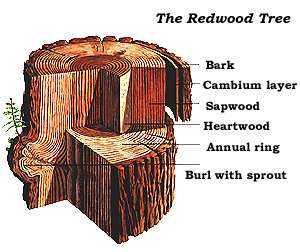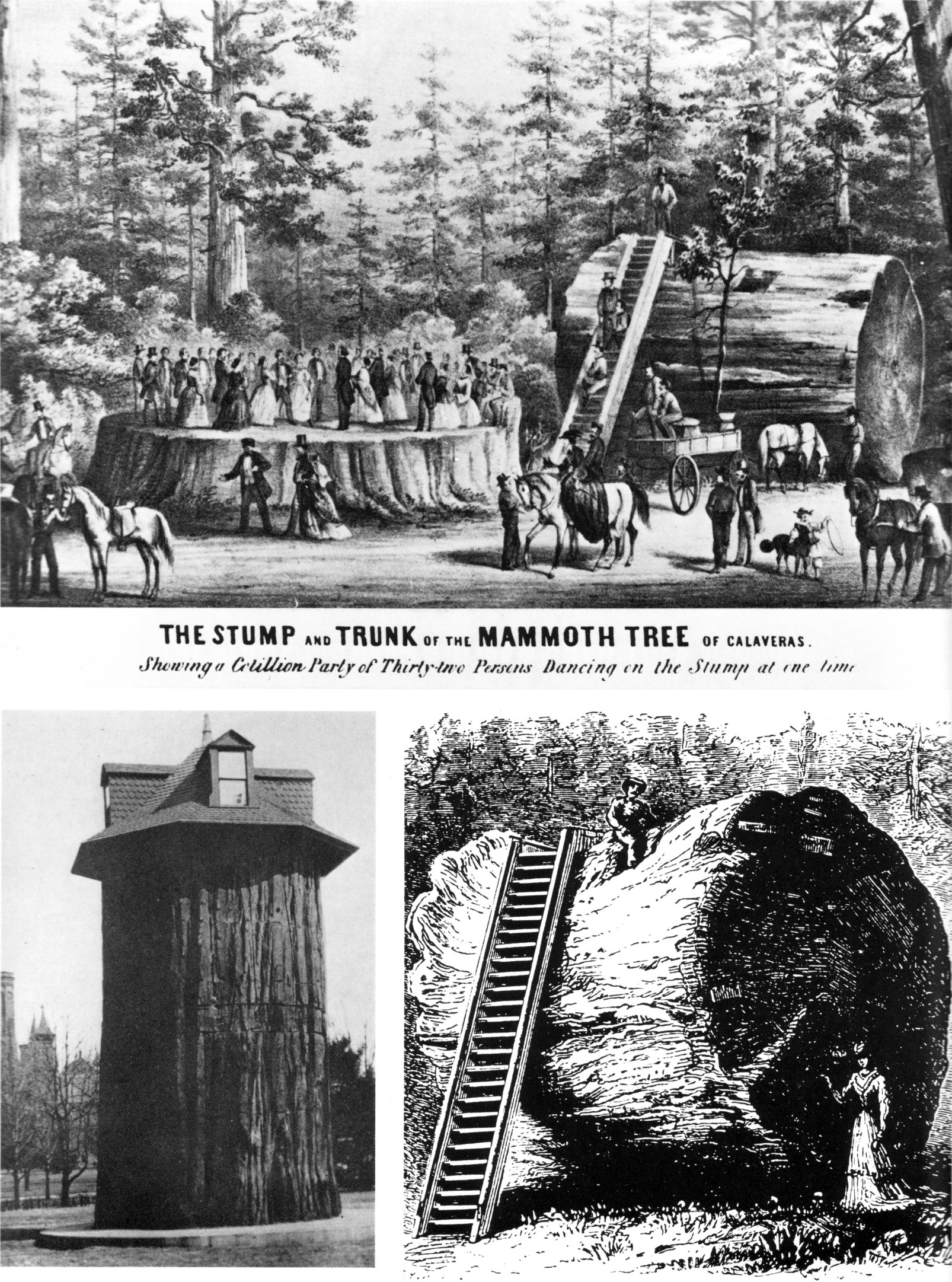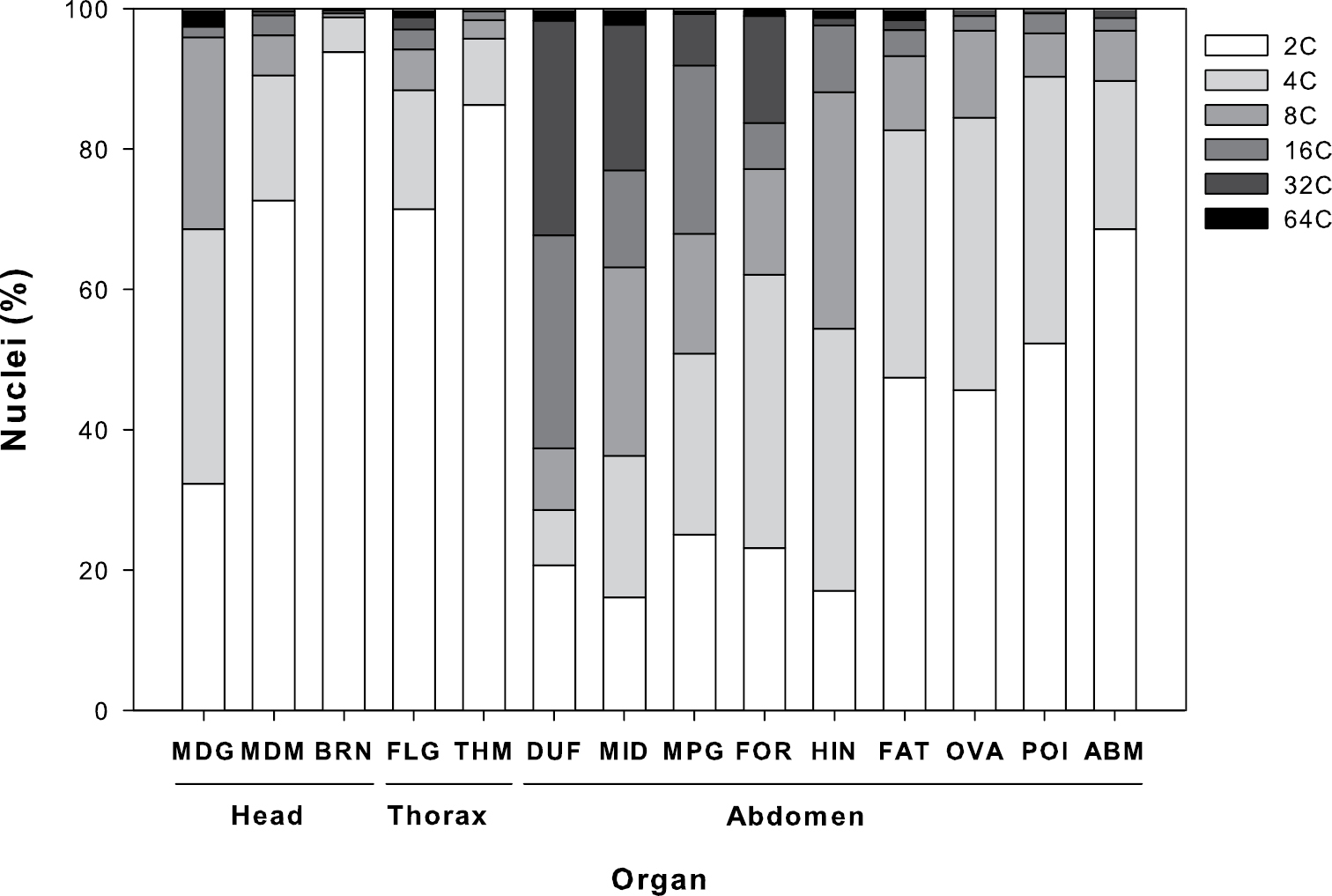|
Sequoioideae
Sequoioideae, commonly referred to as redwoods, is a subfamily of coniferous trees within the family Cupressaceae, that range in the northern hemisphere. It includes the largest and tallest trees in the world. The trees in the subfamily are amongst the most notable trees in the world and are common ornamental trees. The subfamily reached its peak of diversity during the early Cenozoic. Description The three redwood subfamily genera are '' Sequoia'' from coastal California and Oregon, '' Sequoiadendron'' from California's Sierra Nevada, and '' Metasequoia'' in China. The redwood subfamily contains the largest and tallest trees in the world. These trees can live for thousands of years. Threats include logging, fire suppression, and burl poaching. Only two of the genera, ''Sequoia'' and ''Sequoiadendron'', are known for massive trees. Trees of '' Metasequoia'', from the single living species '' Metasequoia glyptostroboides'', are deciduous, grow much smaller (although are sti ... [...More Info...] [...Related Items...] OR: [Wikipedia] [Google] [Baidu] |
Cupressaceae
Cupressaceae or the cypress family is a family of conifers. The family includes 27–30 genera (17 monotypic), which include the junipers and redwoods, with about 130–140 species in total. They are monoecious, subdioecious or (rarely) dioecious trees and shrubs up to tall. The bark of mature trees is commonly orange- to red-brown and of stringy texture, often flaking or peeling in vertical strips, but smooth, scaly or hard and square-cracked in some species. The family reached its peak of diversity during the Mesozoic era. Description The leaves are arranged either spirally, in decussate pairs (opposite pairs, each pair at 90° to the previous pair) or in decussate whorls of three or four, depending on the genus. On young plants, the leaves are needle-like, becoming small and scale-like on mature plants of many genera; some genera and species retain needle-like leaves throughout their lives. Old leaves are mostly not shed individually, but in small sprays of foliage ( clad ... [...More Info...] [...Related Items...] OR: [Wikipedia] [Google] [Baidu] |
Austrosequoia
''Austrosequoia'' was a genus of redwood that existed from the Cretaceous to Oligocene in what is now Australia and New Zealand. Fossils are known from the Winton Formation, the Little Rapid River in Tasmania and the Tupuangi Formation. While there have been doubts on its identity as a member of Sequoioideae, it does seem likely based on morphological similarity. It is not the only evidence of Sequoioideae members in the Southern Hemisphere, as there is some evidence of a species of Sequoia (''Sequoia chilensis'') that once lived in the Miocene of Chile, though these specimens are questionable. It is not known why ''Austrosequoia'' went extinct with the study that described the last species,''A. tasmanica'', stating that the decline of the conifers in Tasmania was clearly something rather complex which requires extensive study. Regardless, modern attempts in Oceania have managed to grow the extant Coastal Redwood (native to California California () is a U.S. state ... [...More Info...] [...Related Items...] OR: [Wikipedia] [Google] [Baidu] |
Metasequoia
''Metasequoia'', or dawn redwood, is a genus of fast-growing coniferous trees. It contains one extant (living) species, ''Metasequoia glyptostroboides'', which is one of three extant species of conifers known as redwoods in the world. ''Metasequoia glyptostroboides'' is native to Lichuan county in Hubei province, China. Although the shortest of the redwoods, it grows to at least in height. Local villagers refer to the original tree from which most others derive as ''Shuǐshān'' (水杉), or "water fir", which is part of a local shrine. Since its rediscovery in 1944, the dawn redwood has become a popular ornamental, with examples found in various parks in a variety of countries. Together with ''Sequoia sempervirens'' (coast redwood) and ''Sequoiadendron giganteum'' (giant sequoia) of California, ''Metasequoia'' is classified in the Cupressaceae subfamily Sequoioideae. ''M. glyptostroboides'' is the only living species in its genus, but three fossil species are known. Se ... [...More Info...] [...Related Items...] OR: [Wikipedia] [Google] [Baidu] |
Sequoia Sempervirens
''Sequoia sempervirens'' ()''Sunset Western Garden Book,'' 1995: 606–607 is the sole living species of the genus ''Sequoia (genus), Sequoia'' in the cypress family Cupressaceae (formerly treated in Taxodiaceae). Common names include coast redwood, coastal redwood and California redwood. It is an evergreen, long-lived, monoecious tree living 1,200–2,200 years or more. This species includes the List of tallest trees, tallest living trees on Earth, reaching up to in height (without the roots) and up to in diameter at breast height. These trees are also among the List of oldest trees, longest-living trees on Earth. Before commercial logging and clearing began by the 1850s, this massive tree occurred Native species, naturally in an estimated along much of coastal California (excluding southern California where rainfall is not sufficient) and the southwestern corner of coastal Oregon within the United States. Being the tallest tree species, with a small range and an extremely ... [...More Info...] [...Related Items...] OR: [Wikipedia] [Google] [Baidu] |
Metasequoia Glyptostroboides
''Metasequoia glyptostroboides'', the dawn redwood, is a fast-growing, endangered deciduous pinophyta, conifer. It is the sole living species of the genus ''Metasequoia'', one of three genera in the subfamily Sequoioideae of the family (botany), family Cupressaceae. It now survives in the wild only in wet lower slopes and Montane ecosystems, montane river and stream valleys in the border region of Hubei and Hunan provinces and Chongqing municipality in south-central China, notably in Lichuan, Hubei, Lichuan county in Hubei. Although the shortest of the redwoods, it can grow to in height. In 1941, the genus ''Metasequoia'' was reported by paleobotanist as a widely distributed extinct genus based on fossils, before attracting considerable attention a few years later when small populations were found alive in central China. It is a well-known example of a living fossil species. Modern dawn redwood appears identical to its late Cretaceous ancestors. The tree faces considerable risk ... [...More Info...] [...Related Items...] OR: [Wikipedia] [Google] [Baidu] |
Sequoia (genus)
''Sequoia'' is a genus of redwood coniferous trees in the subfamily Sequoioideae of the family Cupressaceae. The only extant species of the genus is '' Sequoia sempervirens'' in the Northern California coastal forests ecoregion of Northern California and Southwestern Oregon in the United States. The two other genera in the subfamily Sequoioideae, '' Sequoiadendron'' and '' Metasequoia'', are closely related to ''Sequoia''. It includes the tallest trees, as well as the heaviest, in the world. Several extinct species have been named from fossil A fossil (from Classical Latin , ) is any preserved remains, impression, or trace of any once-living thing from a past geological age. Examples include bones, shells, exoskeletons, stone imprints of animals or microbes, objects preserve ...s, including ''Sequoia affinis ''(Western North America) and ''Sequoia magnifica'' (petrified wood from the Yellowstone National Park area). Etymology The name ''Sequoia'' was first ... [...More Info...] [...Related Items...] OR: [Wikipedia] [Google] [Baidu] |
Sequoiadendron Giganteum
''Sequoiadendron giganteum'' (also known as the giant sequoia, giant redwood, Sierra redwood or Wellingtonia) is a species of coniferous tree, classified in the family Cupressaceae in the subfamily Sequoioideae. Giant sequoia specimens are the largest trees on Earth. They are native to the groves on the western slopes of the Sierra Nevada (U.S.), Sierra Nevada mountain range of California but have been introduced, planted, and grown around the world. The giant sequoia is listed as an endangered species by the International Union for Conservation of Nature, IUCN with fewer than 80,000 remaining in its native California. The tree was introduced to the U.K. in 1853, and by now might have 500,000 trees growing there where it is more commonly known as Wellingtonia after the Duke of Wellington. The giant sequoia grow to an average height of 50–85 m (164–279 ft) with trunk diameters ranging from 6–8 m (20–26 ft). Record trees have been measured at 94.8 m (311&nbs ... [...More Info...] [...Related Items...] OR: [Wikipedia] [Google] [Baidu] |
Athrotaxis
''Athrotaxis'' is a genus of two to three species (depending on taxonomic opinion) of conifers in the cypress family, Cupressaceae. The genus is endemic to western Tasmania, where they grow in high-elevation temperate rainforests.Farjon, A. (2005). ''Monograph of Cupressaceae and Sciadopitys''. Royal Botanic Gardens, Kew. They are medium-sized evergreen trees, reaching 10–30 m (rarely 40 m) tall and 1-1.5 m trunk diameter. The leaves are scale-like, 3–14 mm long, are borne spirally on the shoots. The cones are globose to oval, 1–3 cm diameter, with 15-35 scales, each scale with 3-6 seeds; they are mature in 7–9 months after pollination, when they open to release the seeds. The male (pollen) cones are small, and shed their pollen in early spring. They are very susceptible to bush fires, and have declined markedly in abundance due to accidental and deliberate fires since the European colonisation of Tasmania. Classification Taxonomy ''Athrotaxis'' is the ... [...More Info...] [...Related Items...] OR: [Wikipedia] [Google] [Baidu] |
Pinophyta
Conifers () are a group of cone-bearing seed plants, a subset of gymnosperms. Scientifically, they make up the division Pinophyta (), also known as Coniferophyta () or Coniferae. The division contains a single extant class, Pinopsida. All extant conifers are perennial woody plants with secondary growth. The majority are trees, though a few are shrubs. Examples include cedars, Douglas-firs, cypresses, firs, junipers, kauri, larches, pines, hemlocks, redwoods, spruces, and yews.Campbell, Reece, "Phylum Coniferophyta". ''Biology''. 7th ed. 2005. Print. p. 595. As of 2002, Pinophyta contained seven families, 60 to 65 genera, and more than 600 living species. Although the total number of species is relatively small, conifers are ecologically important. They are the dominant plants over large areas of land, most notably the taiga of the Northern Hemisphere, but also in similar cool climates in mountains further south. Boreal conifers have many wintertime adapta ... [...More Info...] [...Related Items...] OR: [Wikipedia] [Google] [Baidu] |
Phylogenies
A phylogenetic tree or phylogeny is a graphical representation which shows the evolutionary history between a set of species or taxa during a specific time.Felsenstein J. (2004). ''Inferring Phylogenies'' Sinauer Associates: Sunderland, MA. In other words, it is a branching diagram or a tree showing the evolutionary relationships among various biological species or other entities based upon similarities and differences in their physical or genetic characteristics. In evolutionary biology, all life on Earth is theoretically part of a single phylogenetic tree, indicating common ancestry. Phylogenetics is the study of phylogenetic trees. The main challenge is to find a phylogenetic tree representing optimal evolutionary ancestry between a set of species or taxa. Computational phylogenetics (also phylogeny inference) focuses on the algorithms involved in finding optimal phylogenetic tree in the phylogenetic landscape. Phylogenetic trees may be rooted or unrooted. In a ''rooted'' phy ... [...More Info...] [...Related Items...] OR: [Wikipedia] [Google] [Baidu] |
Polyploidy
Polyploidy is a condition in which the cells of an organism have more than two paired sets of ( homologous) chromosomes. Most species whose cells have nuclei (eukaryotes) are diploid, meaning they have two complete sets of chromosomes, one from each of two parents; each set contains the same number of chromosomes, and the chromosomes are joined in pairs of homologous chromosomes. However, some organisms are polyploid. Polyploidy is especially common in plants. Most eukaryotes have diploid somatic cells, but produce haploid gametes (eggs and sperm) by meiosis. A monoploid has only one set of chromosomes, and the term is usually only applied to cells or organisms that are normally diploid. Males of bees and other Hymenoptera, for example, are monoploid. Unlike animals, plants and multicellular algae have life cycles with two alternating multicellular generations. The gametophyte generation is haploid, and produces gametes by mitosis; the sporophyte generation is diploid and p ... [...More Info...] [...Related Items...] OR: [Wikipedia] [Google] [Baidu] |
Jurassic
The Jurassic ( ) is a Geological period, geologic period and System (stratigraphy), stratigraphic system that spanned from the end of the Triassic Period million years ago (Mya) to the beginning of the Cretaceous Period, approximately 143.1 Mya. The Jurassic constitutes the second and middle period of the Mesozoic, Mesozoic Era as well as the eighth period of the Phanerozoic, Phanerozoic Eon and is named after the Jura Mountains, where limestone strata from the period were first identified. The start of the Jurassic was marked by the major Triassic–Jurassic extinction event, associated with the eruption of the Central Atlantic magmatic province, Central Atlantic Magmatic Province (CAMP). The beginning of the Toarcian Age started around 183 million years ago and is marked by the Toarcian Oceanic Anoxic Event, a global episode of Anoxic event, oceanic anoxia, ocean acidification, and elevated global temperatures associated with extinctions, likely caused by the eruption of the Kar ... [...More Info...] [...Related Items...] OR: [Wikipedia] [Google] [Baidu] |









